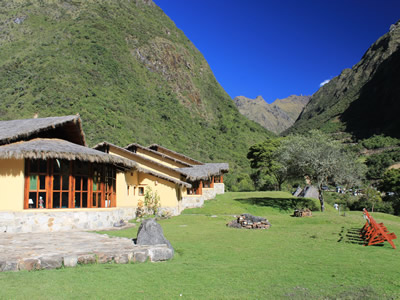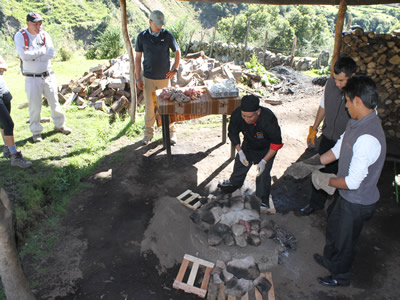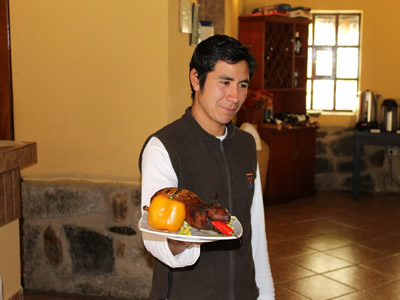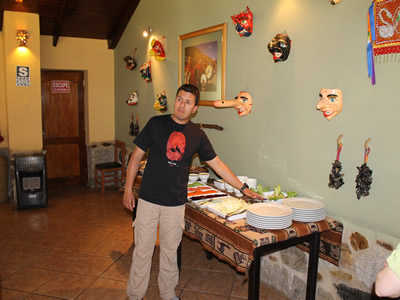Peru - Pachamanca: Peruvian-style barbecue
The dinners on this trek were really good and it wasn't just because we were hungry every evening after a hard day of hiking. Although we were staying in remote locations, the lodges had full kitchen facilities and a wide range of food stocks. Most of the people who worked at the lodges were locals who lived nearby, but our two cooks were hired by Mountain Travel/Sobek and moved from lodge to lodge with us. The head cook was an accomplished chef. The assistant cook (I guess she would be our sous chef) was his daughter who was training to be a chef herself. To do their job, each day they had to get up and do the same hike that we did to get to the next lodge. Except that at the end of the hike we could collapse and relax. Their workday just started and they had to spend the evening preparing our elaborate dinners. Talk about a tough commute to work everyday! They did a great job though and the food was always excellent.
When we arrived at the Colpa Lodge the head cook was already there. Because we had taken a leisurely hike he had arrived well before us and was busy preparing a special treat for lunch - a pachamancha. This is a special type of barbecue that is done in Peru for very special occasions. By the time we got there the cook and two assistants from the lodge staff had already started by building a fire inside a large stack of rocks. They let this fire burn long enough to get the rocks really hot. Then the rocks were unstacked and piled on the side and the fire was put out. There was a table nearby with the food that was ready to be cooked, a large assortment of meats and vegetables wrapped in foil. Some of the hot rocks were piled to make a ring. Then the the food was inserted into the center of the rock pile and covered with the rest of the rocks. Next a large sheet of cardboard was layed over the rocks. Quickly, before the cardboard got hot enough to catch fire, loose dirt was shoveled on top of it to completely cover it. Conveniently there just happened to be a large pile of loose dirt next to the fire pit. I think they had done this before. The dirt acted as insulation to keep the heat of the rocks in. It also kept out air so that the cardboard didn't catch fire.
Now the food just needed some time to cook. We all left to get cleaned up and changed for lunch. About forty five minutes later we were back just in time to see the process reversed. The dirt was removed and piled neatly off to the side. It would be ready for another barbecue tomorrow for the next group. The cardboard was set aside, and wearing very heavy gloves, the hot stones were unpiled and the food packages were removed and taken to the kitchen. We all headed into the dining room to await the presentation.
It turned out that there was quite a spread. We had to remember that this was a late lunch and that we were going to be having a big dinner in just four hours. There were lots of cooked vegetables as well as some meats. There were various types of potatoes. The potato originated in South America, probably in Peru, and there are thousands of kinds of potatoes that are grown there.
The featured item was a roast guinea pig, known locally as cuy, brought in on a special platter. After showing it around it was carved up and set out with the rest of the meal. I took a couple of pieces just to try it. It seemed like mostly bone with very little meat. From each of the three pieces that I put on my plate I only got a tiny sliver of meat. Together they added up to one mouthful. So yes, I did try guinea pig. Juan promised us that it "tastes like CHEE-ken". It was like dark meat on chicken but with a stronger, gamier taste. Actually it reminded me more of duck than chicken, not that I have duck that often. It wasn't bad but it certainly didn't seem worth the effort it took to get the tiny bits of meat. It certainly is regarded as a delicacy in Peru. Many people raise guinea pigs in their homes, even in the city. When we had been driving through the outskirts of Cusco on the way to start the trek, we had seen people on street corners selling cut grass. People bought it to take home to feed their guinea pigs. I don't think it will catch on in the US although I could be wrong.




